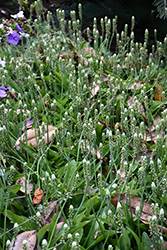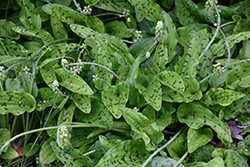Fri & Sat 8am - 8pm
Sun 8am - 7pm
Anytown, USA 12345
fax: 261.787.0463
e-mail: info@successgc.com


Plant Finder

Plant Height: 8 inches
Flower Height: 12 inches
Spread: 12 inches
Sunlight:
![]()
![]()
Other Names: Leopard Plant
Description:
This spreading, clump forming bulb plant produces attractive, fleshy green leaves covered with black spots, like a leopard; spikes of tiny, off-white bell flowers appear on and off all year; an easy to grow indoor accent plant for low to medium light
Features & Attributes
African False Hosta has masses of beautiful spikes of creamy white bell-shaped flowers rising above the foliage from early winter to late fall. Its attractive textured pointy leaves remain lime green in color with distinctive black spots throughout the year.
This is an herbaceous evergreen houseplant with a spreading, ground-hugging habit of growth. This plant may benefit from an occasional pruning to look its best.
Planting & Growing
When grown indoors, African False Hosta can be expected to grow to be about 8 inches tall at maturity extending to 12 inches tall with the flowers, with a spread of 12 inches. It grows at a fast rate, and under ideal conditions can be expected to live for approximately 10 years. This houseplant performs well in both bright or indirect sunlight and strong artificial light, and can therefore be situated in almost any well-lit room or location. It is very adaptable to both dry and moist soil, but will not tolerate any standing water. The surface of the soil shouldn't be allowed to dry out completely, and so you should expect to water this plant once and possibly even twice each week. Be aware that your particular watering schedule may vary depending on its location in the room, the pot size, plant size and other conditions; if in doubt, ask one of our experts in the store for advice. It will benefit from a regular feeding with a general-purpose fertilizer with every second or third watering. It is not particular as to soil type or pH; an average potting soil should work just fine. Be warned that parts of this plant are known to be toxic to humans and animals, so special care should be exercised if growing it around children and pets.
There are many factors that will affect the ultimate height, spread and overall performance of a plant when grown indoors; among them, the size of the pot it's growing in, the amount of light it receives, watering frequency, the pruning regimen and repotting schedule. Use the information described here as a guideline only; individual performance can and will vary. Please contact the store to speak with one of our experts if you are interested in further details concerning recommendations on pot size, watering, pruning, repotting, etc.
-- THIS IS A HOUSEPLANT AND IS NOT MEANT TO SURVIVE THE WINTER OUTDOORS IN OUR CLIMATE --

